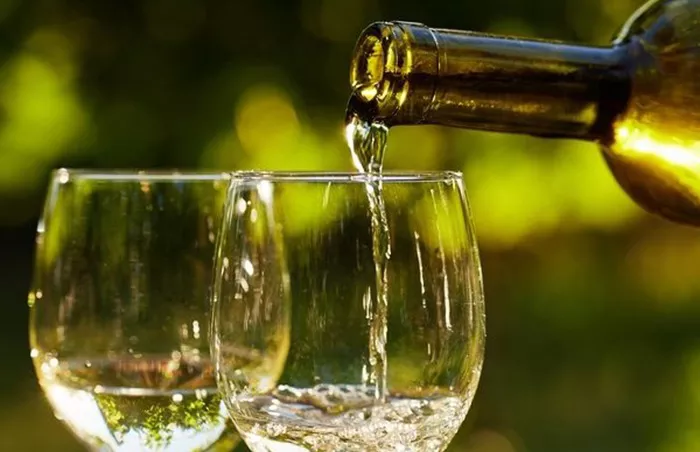French winemakers are sounding the alarm for the 2024 vintage, warning of a potential shortage following one of the wettest years on record. This year’s harsh conditions have compounded ongoing climate challenges, leaving vineyards struggling with both quantity and quality.
The Domaine Roland Lavantureux winery, known for its prized Chardonnay grapes, experienced an unusually brief harvest lasting just nine days—roughly half the typical duration. As a result, wine from this year will be produced in smaller quantities than usual.
David Lavantureux, a winemaker who has been part of the family business since 2010, described 2024 as his most challenging year yet. “All the old-timers will tell you the same thing. It’s been a very difficult year because the weather has been so unpredictable. We have not been spared a single thing,” he stated.
The tumultuous weather began with frost in April, followed by a damaging double hailstorm in May. Relentless rain continued until harvest, creating ideal conditions for a destructive mildew fungus. The Burgundy wine federation reported that nearly 2,500 acres of Chablis vineyards were affected by the May storm, with the excess moisture exacerbating the spread of the disease, which leads to significant crop losses and can compromise wine quality.
David and his brother Arnaud faced an uphill battle to control the mildew, employing various treatments that ultimately failed due to the persistent rain. “On our estate, we’re looking at losses of 60 to 65%,” he noted, emphasizing the low-yield nature of this year.
Overall wine production across the region is projected to reach 39.3 million hectolitres, an 18% decrease from 2023 and 11% below the five-year average. “It’s been a very tough year, both physically and mentally. We’re relieved the harvest is over. I’m exhausted,” David added.
The unique challenges of this season will undoubtedly shape the characteristics of the 2024 vintage. “Balances are not at all the same,” he explained. “There’s more acidity. Maturity is less optimal. But the goal is to craft the wine so that, in the end, the balance is as perfect as possible.”
Traditionally, the vineyards in Chablis, located in northern Bourgogne, have thrived under a climate of cold winters and hot summers, with annual rainfall averaging between 650-700mm. However, climate change is altering these conditions, leading to more frequent unseasonably mild weather, increased rainfall, and recurring spring frosts.
Frost damage has proven particularly troublesome for vineyards, with similar events occurring in recent years and causing substantial financial losses. Experts suggest that climate change has heightened the likelihood of damaging frosts, as evidenced by a significant frost in 2021.
Reflecting on these changes, David remarked, “There was a period when we thought that with global warming, Chablis would be safe from frost. But over the last 15 years, it’s come back even stronger.”
In response to these challenges, winemakers are exploring innovative solutions. Techniques such as delaying bud burst by cutting vines later help mitigate frost vulnerability. Additionally, growers employ various protective measures during frost events, including lighting candles in the vineyards, installing electric lines to warm the vines, and spraying water on buds to create an ice layer that maintains temperature without dropping too low.
As the wine community prepares for the repercussions of 2024’s tumultuous weather, the hope remains that careful crafting will yield a memorable vintage despite the challenges faced.
You Might Be Interested In:


